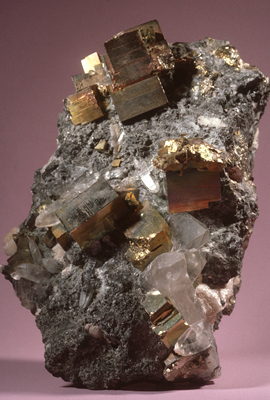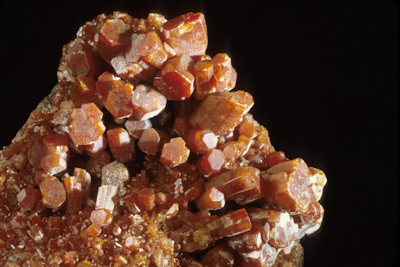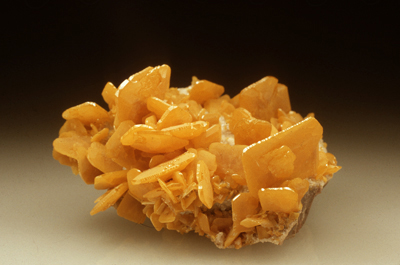How Good Is Your Imagination? - Part 1
By Anna Domitrovic
We’ll be taking a look at the six crystal systems in this article (Part 1) and the next article (Part 2). But, unless you’re a crystallographer, you’ll need a good imagination to make sense of how crystals are put together and the way they look to the observer. The focus for this installment will be the isometric or cubic, the hexagonal and the tetragonal crystal systems. There is an order to the way the atoms of an element or compound congregate to form a geometric shape. Since that arrangement starts at the atomic level, you’ll need to close your eyes and visualize that arrangement. But keep in mind as well, that the crystal forms we’ll talk about are not as perfect as the models we’ve given you. Mother Nature has a habit of putting her own spin on crystallography.
Let’s start with a relatively simple and common crystal in the isometric crystal system. Crystal forms are cubes (pyrite, halite), octahedrons (fluorite) and dodecahedrons (garnet), but there are many, many forms and subclasses. Ever hear of a dyakisdodecahedron. Well, it exists in the isometric crystal system. Let’s go back to the ones mentioned previously. Picture a perfect cube. There are three imaginary lines called axes that intersect in the middle of the cube. Each axis is of equal length and at a 90 degree angle to one another. That is true for every form in the isometric crystal system. Some other minerals that are in this system include copper, gold and silver. How many more can you think of? The models I’ve included to represent this crystal system are (click on) the cube and (click on) the octahedron.
The hexagonal crystal system is the next one to take a look at. A form you may be familiar with includes prisms or barrel-shaped crystals (beryl, mimetite, vanadinite). Scalenes and rhombs (dogtooth calcite, rhodochrosite) are also forms common to this crystal system. Some crystallographers would like to take minerals like calcite and rhodochrosite out of the hexagonal system and put it in another similar one called trigonal, but for our purposes, we’ll call them all hexagonal. Imagine four axes for this crystal system. Three of them are equal in length at 120 degree angles from one another. There’s a fourth one, perpendicular to the other three and different in length. Some other minerals that crystallize in this system include bobdownsite, corundum, fluorapatite and pyromorphite. Once again, how many more can you add to the list? You have a model for (click on) the hexagonal dipyramid and (click on) the rhombohedron.
Now let’s look at the tetragonal crystal system. We’re back to three axes. Two of them are equal in length and at right angles to one another. The third is perpendicular to the other two, but can be either shorter or longer. Crystals may look similar to those in the isometric system, but they are either stretched or compressed along that third axis. Arizona’s state mineral, wulfenite, fits into this crystal system. Others include chalcopyrite, matlockite and scheelite. And the crystal models you have to work with are (click on) the tetragonal dipyramid and (click on) the tetragonal prism.
Well, I’ve really given your imagination a workout. I hope that the diagrams and images help you to understand what crystallographers are up against. As I said before, many of these crystal forms are not the ideal geometric shape. But practicing with actual mineral crystals is a good exercise in taking your imagination to reality. Give it a try! And stay tuned for Part 2.







